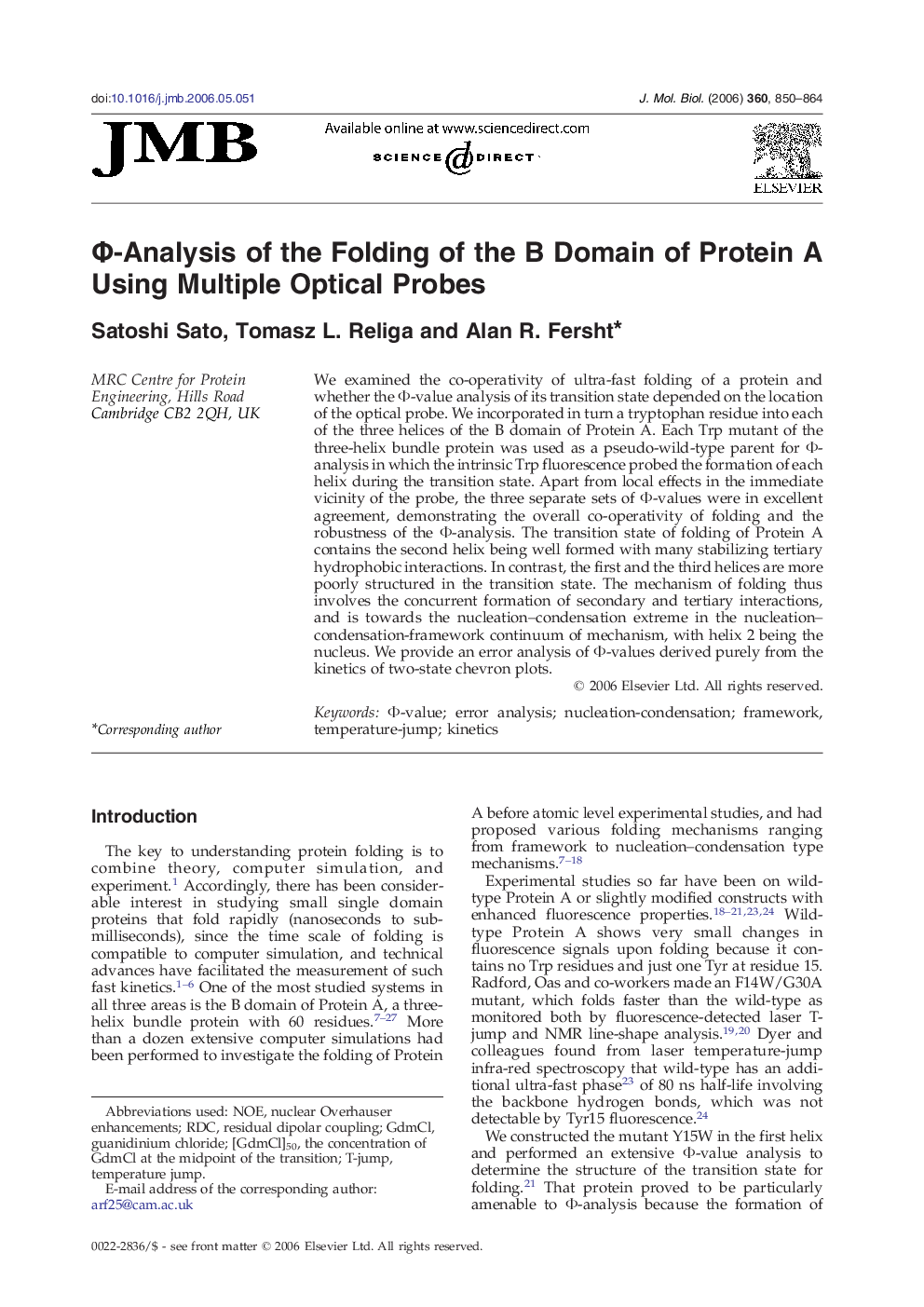| Article ID | Journal | Published Year | Pages | File Type |
|---|---|---|---|---|
| 2189463 | Journal of Molecular Biology | 2006 | 15 Pages |
We examined the co-operativity of ultra-fast folding of a protein and whether the Φ-value analysis of its transition state depended on the location of the optical probe. We incorporated in turn a tryptophan residue into each of the three helices of the B domain of Protein A. Each Trp mutant of the three-helix bundle protein was used as a pseudo-wild-type parent for Φ-analysis in which the intrinsic Trp fluorescence probed the formation of each helix during the transition state. Apart from local effects in the immediate vicinity of the probe, the three separate sets of Φ-values were in excellent agreement, demonstrating the overall co-operativity of folding and the robustness of the Φ-analysis. The transition state of folding of Protein A contains the second helix being well formed with many stabilizing tertiary hydrophobic interactions. In contrast, the first and the third helices are more poorly structured in the transition state. The mechanism of folding thus involves the concurrent formation of secondary and tertiary interactions, and is towards the nucleation–condensation extreme in the nucleation–condensation-framework continuum of mechanism, with helix 2 being the nucleus. We provide an error analysis of Φ-values derived purely from the kinetics of two-state chevron plots.
